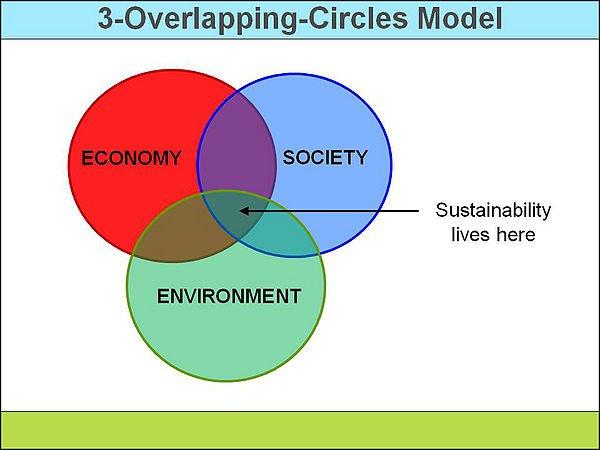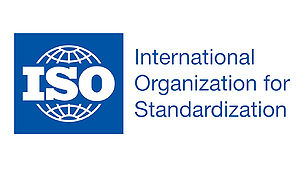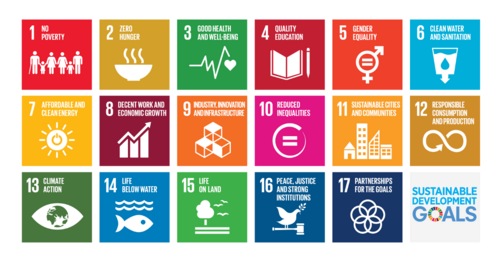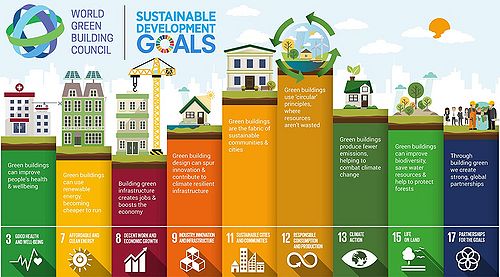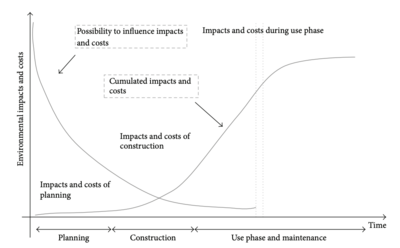Implementation of sustainable choices through project management
Abstract
Once the question about sustainability was, should we do something about it? Now it is, what can we do about it? Times has changed and with all the new knowledge on the subject, people has become aware that this is something that cannot wait. To implement sustainability in an organization requires thorough planning of the organization and its strategies. This is required from the very beginning of every new project that is started and therefore an important step for the project managers. To implement sustainability, it is important to coordinate all the smaller steps in a project and assure the sustainable thinking with every decision. The industry is rising as never seen before and the request for new buildings, clothes electronics and production in general is flourishing. This improves the pressure that already is on the project managers around the world, and the choices they must make revolving sustainability. How do you rate if a project is a success now that sustainability also has to be considered? Does economy beat sustainability when it comes to the success of a project? Sustainability and project management is often talked about in the same sentence but has not been researched very much [1]. With a sustainable mindset, the project manager and the entire team and organization, might achieve greater results that without it.
Contents |
Sustainable choices
The world can no longer tolerate the way we use the natural resources and produce products, like we do in the present day. Furthermore, is the way we neglect the conservation of the planet clearly shown every year in climate report from the UN [2]. This can show the importance of implementing sustainable choices in the earlier stages of a project. The responsibility for this, lies primarily on the project manager, but can also be traced back to the organization. Sustainability might therefore change the way the project manager works and thinks. With multiple standards and literature in mind, a set of principles was constructed. These work as a guideline for project managers, to achieve a more sustainable project [3]. In total, six lines are created:
“Sustainability is about balancing or harmonizing social, environmental and economic interests” [3]
These three interests are interrelated. They affect each other and can only be achieved in a good way, if they are all achieved together.
Sustainability is about both short-term and long-term orientation [3]
It is important that both these aspects of the project are considered. Many companies might be tempted to focus on only the short-term part of sustainability, because it might improve their strength on the stock market and in the public.
Sustainability is about local and global orientation [3]
It is important to balance the local and global way of running an organization. With organizations expanding and moving business around the globe, sustainability might come in second place to economy. The three circles in Figure 1, might therefore become mismatched on a global scale, or even locally.
Sustainability is about consuming income, not capital [3]
Here it states that sustainability is that the nature’s rate of producing or generating resources or energy continues to be intact. This is mostly said for the environmental part of the three interests, and it is important for a project manager to ensure that this is a part of the project. The social aspect of this is making sure your workers and employees are not overworked and mentally exhausted. Furthermore, the economical aspect is not using your capital to pay for the costs in the organization, but the income. Again, all of these aspects have to be involved at all times.
Sustainability is about transparency and accountability [3]
To have an organization that is transparent and is held accountable for its actions, will improve the need of being sustainable. More of the people involved in this, is more likely to make the sustainable choices every time they present themselves, and the organization can succeed in more of their goals.
Sustainability is about personal values and ethics [3]
With the project manager leading on, and the employees listening and agreeing, the organization has a greater chance of remaining sustainable. The entire thinking of an organization might, in some cases, be due for a rework. When many companies revolve around some of the same traditions and believes, sustainability can be a tough challenge to take on. Therefore, it is key to make sure, that all the project managers and leaders have a positive mind, great personal values, and ethics regarding sustainability.
Economy or sustainability
As most people are aware of, sustainable choices are the future. The economy is also important, but when do you draw the line? Is economy in some situations more important than sustainability? Maybe for some organizations. One of the more tough challenges a project manager can face, is when part of the project is a success and the other part, not quite as much. For instance, the implementation of the healthcare IT-system implemented by the danish government, was a huge success measured on time and money spend, but when you ask the doctors and nurses, and everyone else involved, it was not that huge a success [4].
As stated in the six guidelines in the previous chapter, there is a coalition between social, environmental, and economic sustainability. All of these are important to each other, but can any of these be more important to an organization? If a project manager is faced with a choice of spending more money or improving the sustainability of the product, he might very well choose accordingly to the organizations policy. This runs all the way up the corporate ladder to the leaders. If the policy is strict and focusses on making a lot of money, the project manager can feel forced to make a decision they might not want, or feel is the wrong one. This all depends on the personal qualities of the project manager and the leaders, and on how much each of the three aspects, environmental, economy, and social weights for each of them.
The draining of resources from the earth, and usage of fossil fuels can both indicate, that there has been a lot of uncertainty and ignorance on the subject sustainability, and maybe that there is a big economical advantage when ignoring sustainability. Furthermore, more and more big companies with sustainability in focus has shown, that sustainability can be connected to a big growth in economy. To maintain the current number of resources on the planet, and maybe even promote a little growth of resources, the project manager must consider every step of the project. Even when the projection of the project begins, the sustainable choices got to be considered. It can be much more expensive to ensure a sustainable project in the later stages of the project, than if it is implemented from the beginning.
The Brundtland report
In 1983, the UN decided to put down a commission. This commission was a world commission for environment and development. This became necessary because of the continuous questions from the public and media. The commission is led by the Norwegian prime minister Gro Harlem Brundtland, therefore the final report presented by this commission, was called The Brundtland Report. The original title of this paper is Our Common Future [5] and was first presented in 1987. The Brundtland Report showed the world that the way we lived at this age, was not compliant with the needs of the planet. It showed the world a new way, the sustainable way. It was very keen on preserving the current resources and told very strictly that to ensure a suitable planet for future generations, we must not exceed the required consumption. The report was very thorough and had a lot of different statement to what had to be done and what should not be continued. With this report, sustainability was slowly implemented in the different organizations around the world. Today the project managers are required to always keep sustainability in mind, this mainly because of the large amount of focus back in 1983.
Tools for sustainability
As sustainability has affected more or less every industry and organization in a smaller or greater extend in the past couple of years and are expected to have greater influence in the coming years, it is important to have increased vigilance on this specification [6]. Sustainability might become, with the right amount of focus, an important factor in every stage of a project, and even for a program or portfolio. There are many tools to regulate the sustainability throughout the industry. Some of the more used tools are the ISO standards. These standards are used to make sure that the industry, and the project managers in the industry, proceeds with the right choices. The ISO standard 14000 family provides thorough information regarding environmental management, green finance, sustainable coordination, circular economy and so on. With these standards in hand, the project manager can follow the standardization of sustainable development.
Another term used by the project managers and organizations is eco-design. The term covers everything that is designed with the environment and sustainability in mind. Here the product strives to fit into the rules of sustainability and the ISO standards.To imply these standards as a tool, it is important to acknowledge them as a certification. As the 14000 family revolves around sustainability, these standards can be used to a certain degree as guidelines for this. If these are followed strictly from the first part of the project, it is safe to assume that the organization or project has done a fair amount in regard to sustainable choices.
The Sustainable Development Goals, SDG, is another tool that is commonly used as a way of implementing sustainability. These goals are commonly used in the beginning of a project, to amplify the importance of the project, and improve the value. Furthermore, the SDG’s are used as an indicator to make sure that a project complies with the future visions for the given field. As for the construction industry, the SDG’s are handled in a certain way that make sure these goals are involved. As seen on Figure 4, the SDG’s are a subject of interpretation.
Another
References
[1]Marcelino-Sádaba, S., González-Jaen, L. F., & Pérez-Ezcurdia, A. (2015). Using project management as a way to sustainability. From a comprehensive review to a framework definition. Journal of Cleaner Production, 99, 1–16. https://doi.org/10.1016/J.JCLEPRO.2015.03.020
[2] https://www.ipcc.ch/report/ar6/wg1/downloads/report/IPCC_AR6_WGI_Full_Report.pdf - 19/02-2022
[3] Sustainability in Project Management - Gilbert Silvius, Ron Schipper, Julia Planko
[4] Fleron-et-al 2019 Is Success in IT Projects a Fata Morgana
[5] Commission on Environment, W. (n.d.). Report of the World Commission on Environment and Development: Our Common Future Towards Sustainable Development
==
